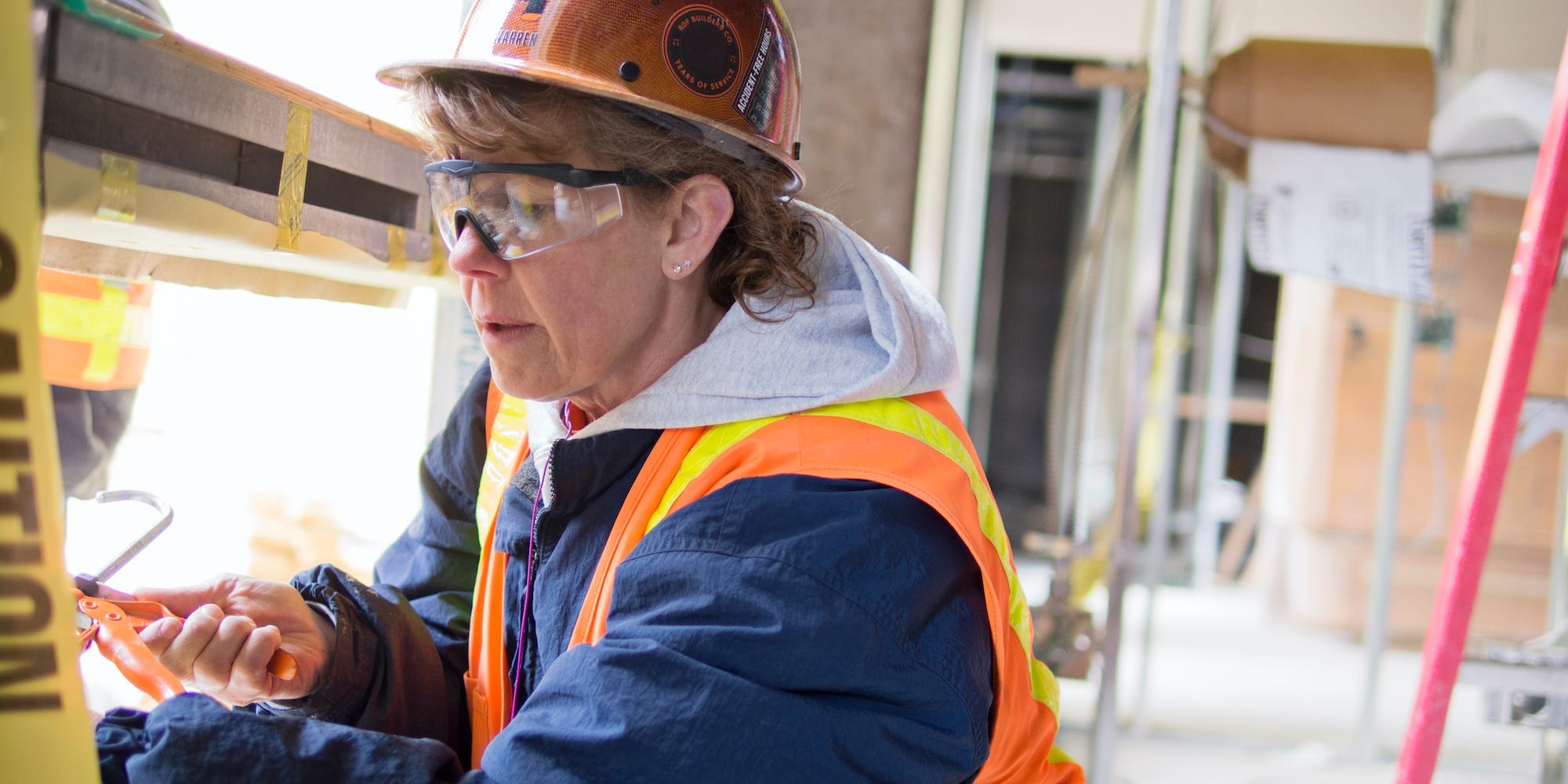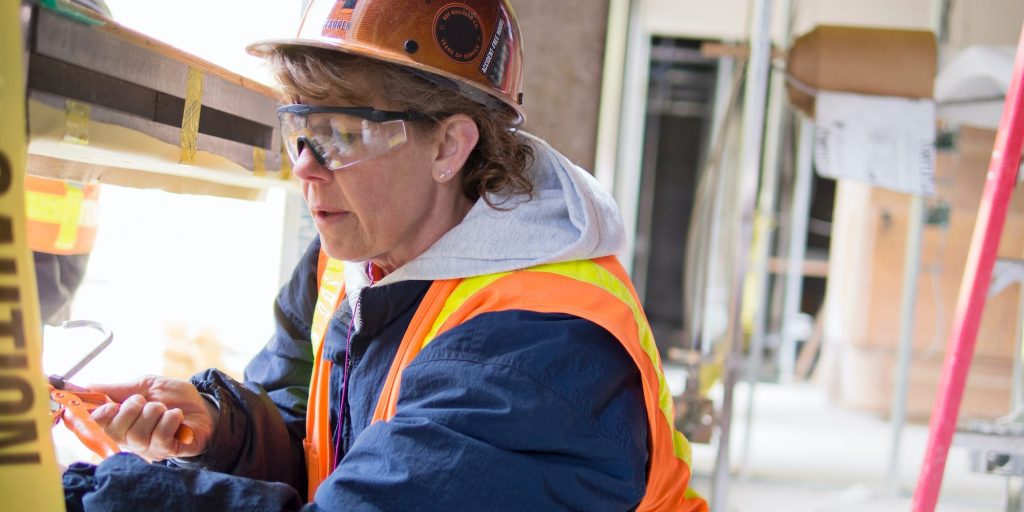
- In 2020, women made up just 10.9% of the construction sector, and only 4% of the jobs in the field.
- A survey found 44% of women and non-binary respondents left or seriously considered leaving construction trades.
- A large share of the respondents said it's because of harassment and lack of respect.
There's a historic labor shortage, especially in the construction industry. But sexism seems to be stronger than economics.
More than four in 10 women and non-binary tradespeople who work in construction-related jobs have said they left or "seriously" considered leaving the industry's trades — and nearly half said it's because of harassment and lack of respect.
That's according to new report from the Institute for Women's Policy Research (IWPR) and it's bad news for an industry badly in need of more workers: It needs an estimated 61,000 new hires a month over the next three years to meet housing demand.
The current shortage should be creating a prime opportunity for job-seeking women to find construction employment, Demond Ware, director of construction for PeopleReady Skilled Trades, told Insider. But the aforementioned social issues stand in the way.
If these problems in construction trades were addressed, these jobs could be an important aspect of solving the "she-cession" that's characterized the pandemic. These jobs paid a median annual wage of $48,610 in 2020 — slightly higher than the median among all occupations of $41,950 — and don't typically require a college degree.
Kelly Kupcak, Oregon Tradeswomen's executive director, pointed out that women are more likely to be in poverty, citing 2019 data from the National Women's Law Center. "If we don't provide not only career opportunities for women to work in high-wage jobs – many of which are blue collar — but necessary supports," she told Insider, "we will continue to see women segregated into 'pink collar' jobs that perpetuate a cycle of marginalization and economic insecurity."
Lack of respect and harassment are main reasons women and non-binary people leave construction
The IWPR survey, conducted from mid-December 2020 to mid-March 2021, asked 2,600 tradeswomen and non-binary tradespeople about their experience in construction trades or as an apprentice. Most — roughly 63% — cited "opportunity for high earnings" as a very important reason they entered the trades.
But the lack of respect and harassment they face — sexism, in short — are leading many to reconsider their careers.
The following chart highlights the "very important" reasons people have left or thought about leaving trades.
The survey also found that childcare is a main issue that makes parents reevaluate their decision to work in trades.
As seen in the chart, nearly 70% of parents with kids under 18 who said they've left or thought about leaving trades cited problems with finding childcare as a somewhat or very important reason why:
Multiple aspects of working in construction contribute to difficulties, including having an early start time or having to work at multiple construction sites with different hours, IWPR wrote.
"The construction industry overall needs to be more innovative in finding solutions for working parents and their families," Kupcak told Insider. "Women have been under-represented in the industry for too long, and because persistent stereotypes that childcare is a 'woman's' issue — affordable, accessible, and quality childcare has not been a priority."
Kupcak suggested longer childcare hours and help finding and paying for care are effective solutions that need to be implemented more widely. She noted North America's Building and Construction Trades Unions (NABTU) in particular have helped institute "creative solutions" to the childcare issue parents in the industry face.
Social pressures mean women often don't consider construction jobs in the first place
According to Bureau of Labor Statistics data, at the industry level, women made up 10.9% of construction employment in 2020, and just 4.0% of construction and extraction workers — the non-office trade jobs like electricians.
"It's mind-blowing that in 2021 there still can be occupations — and often occupations that are well-paid — where women are fewer than 5% of the workforce," Ariane Hegewisch, program director of employment and earnings at IWPR and a coauthor of the new report, told Insider.
Hegewisch said she thinks women may not be informed about this career path, as only 6.0% of respondents said they heard about trade opportunities from high school guidance counselors. She said another reason is social, because the sector is so male.
"As an industry, we need to figure out how to make [skilled trades] a more inclusive environment, especially on job sites; the great news is being more inclusive is on more peoples' minds now," Ware said.
Without change and more outreach to get women into trades though, it could have a negative impact on the industry and US investments in infrastructure.
"Unless the industry tackles the current lack of gender and racial diversity in its workforce, it will likely lack the ability to meet the demands of the future, including substantial new investments to rebuild the nation's physical infrastructure," IWPR wrote in its report.

